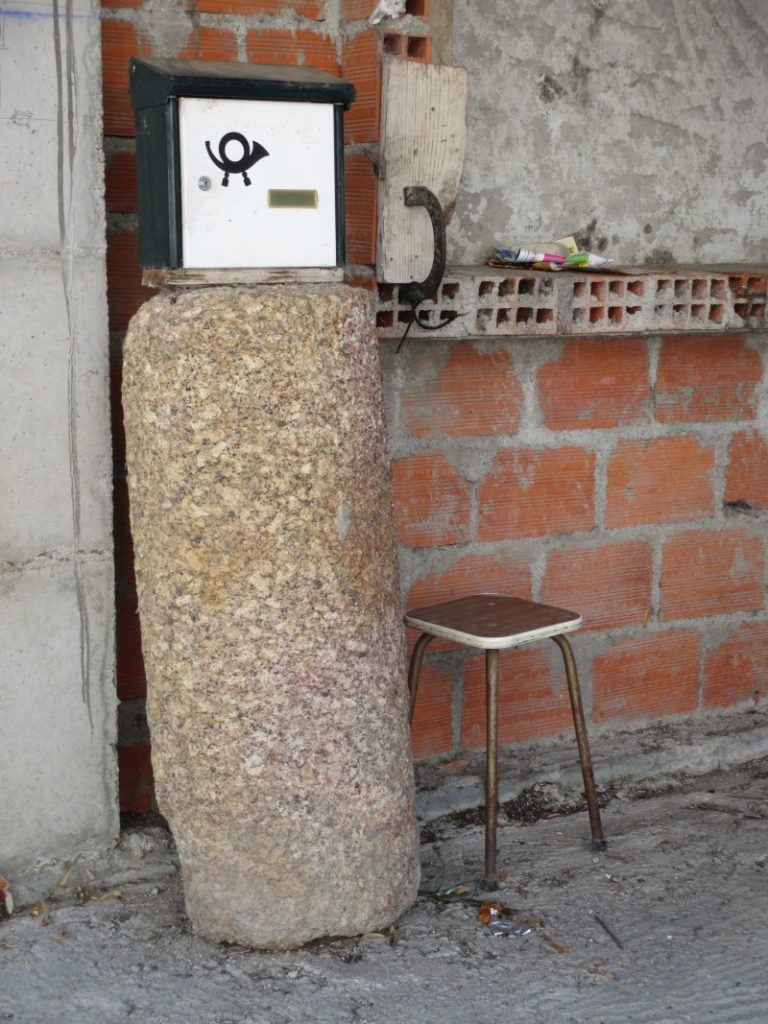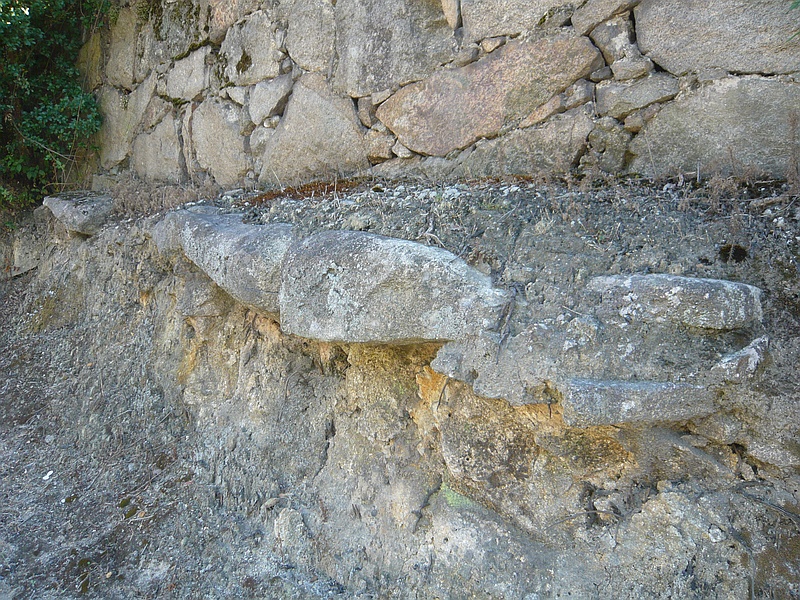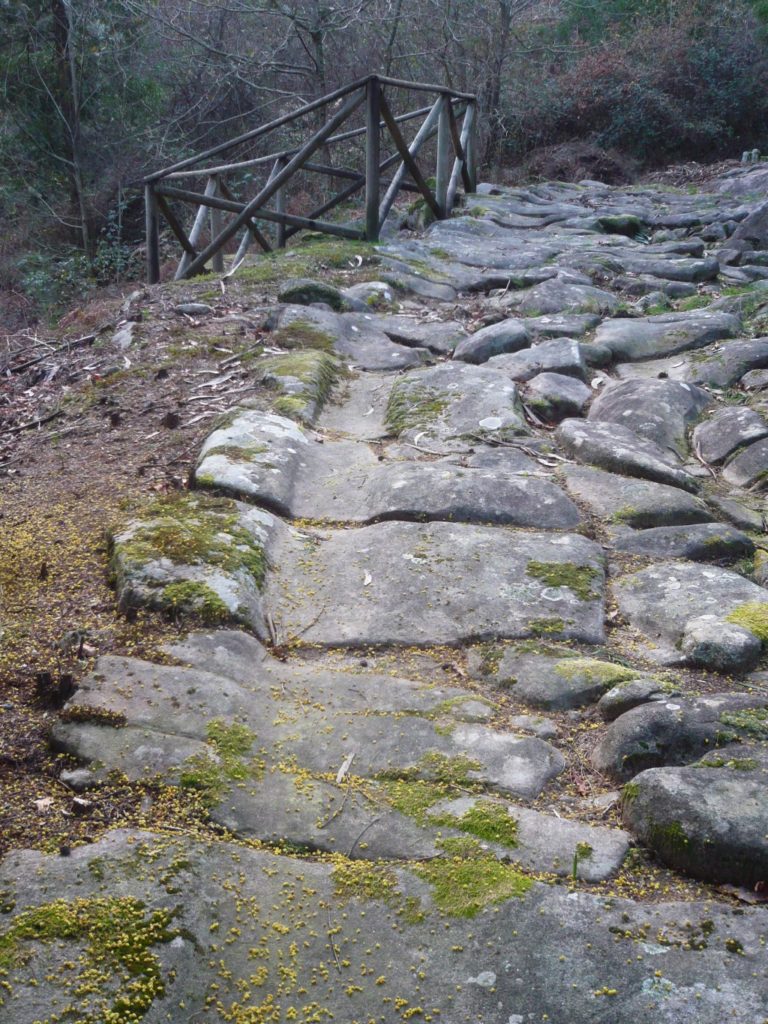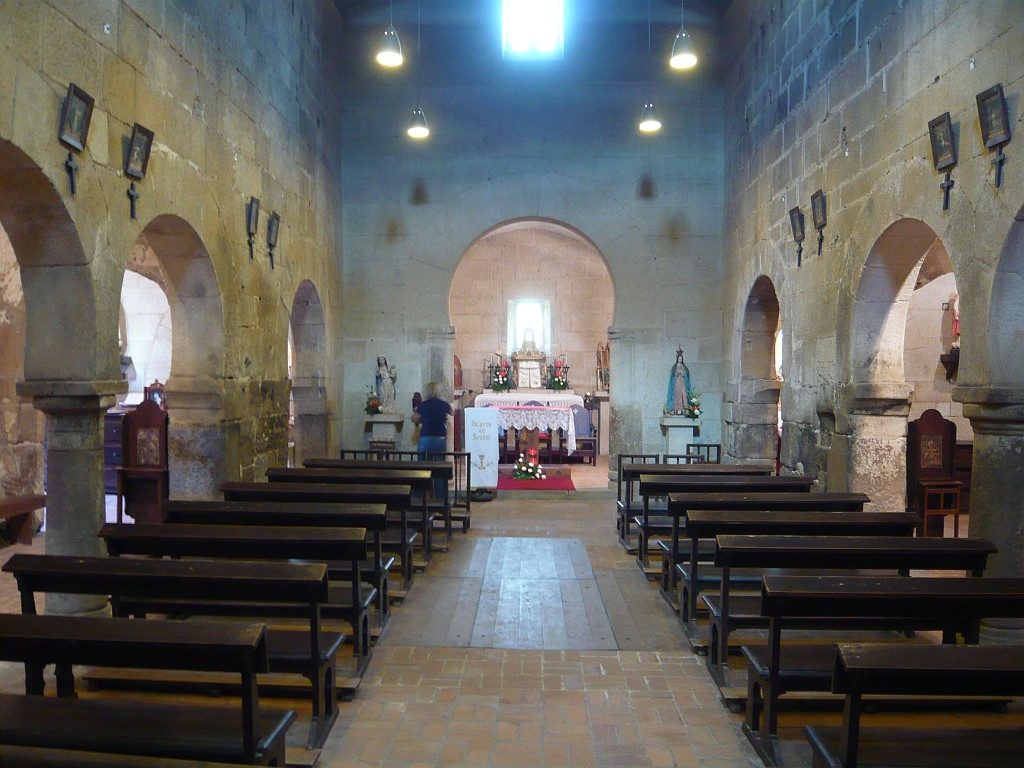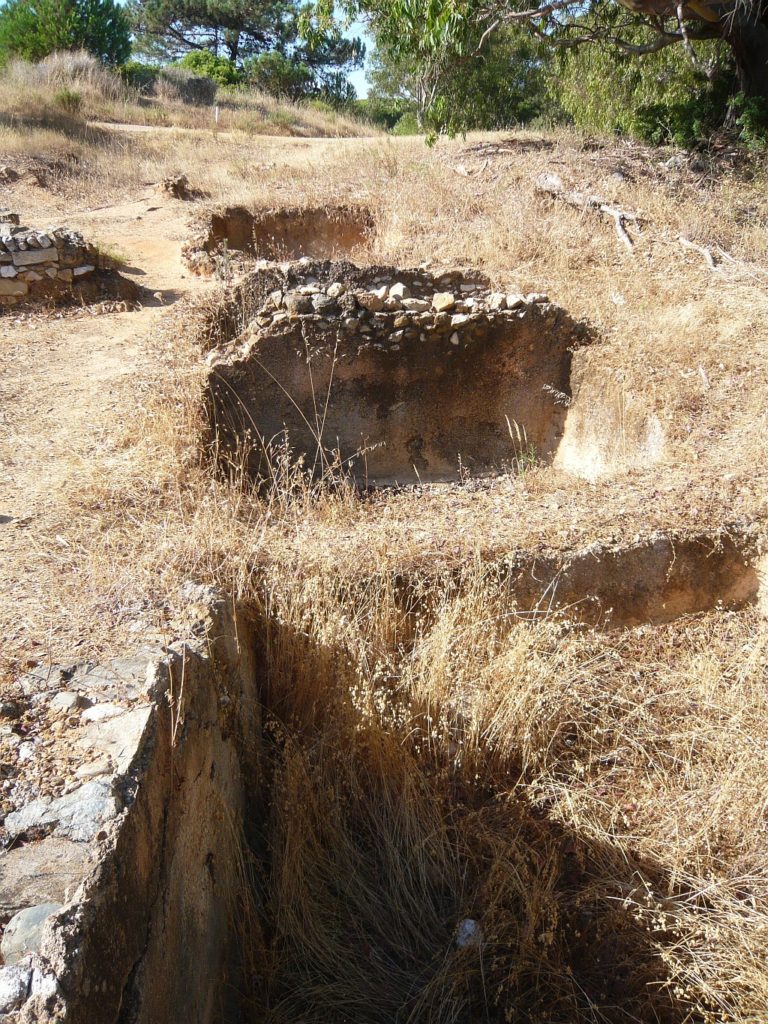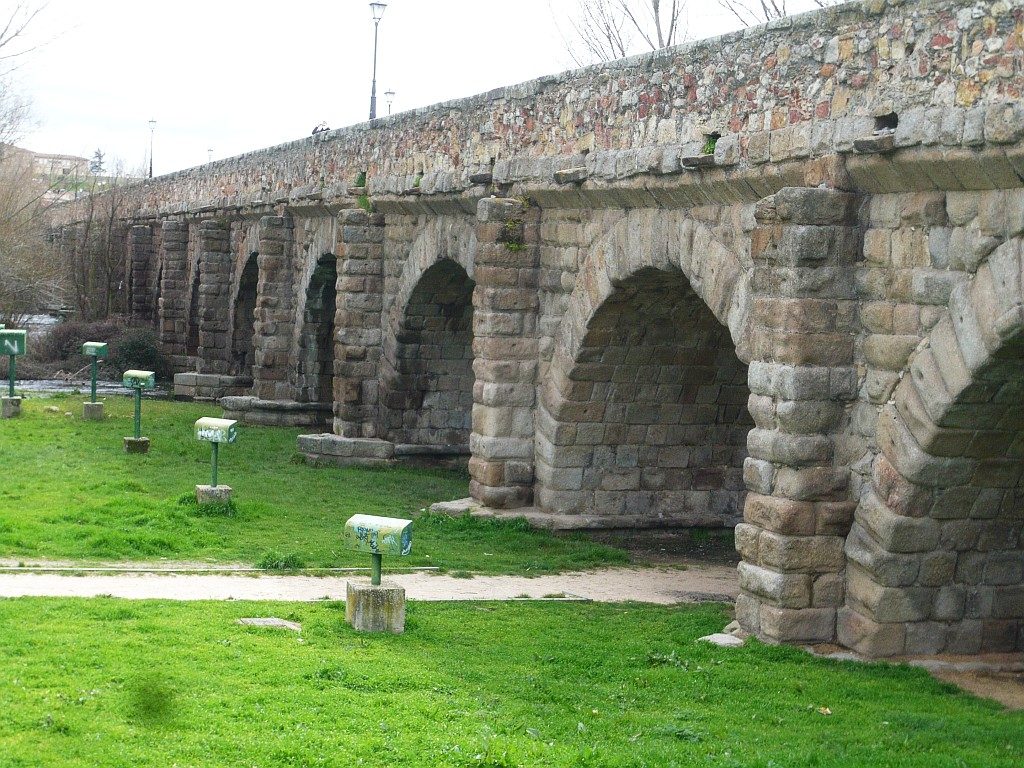(Originally published on January 12, 2015)
The Roman Bridge of Campelos over the Ave River is located northwest of Guimarães and connects the parishes of Vila Nova de Sande and Silvares in Guimarães and was part of the Roman road from Bracara Augusta towards Mérida ignoring Guimarães, since this city was only founded a long time later in the year 950 at the initiative of the Countess D. Mumadona Dias. Despite the successive repairs, the bridge’s structure still shows undoubted Roman characteristics with the typical perfect arched padded apparatus, presenting the typical robustness of the great works of that time; At least the northernmost arc does not look like reconstruction and allows to estimate its original configuration. The Roman road to Mérida certainly passed this crossing of the Ave and not upstream in the bridge of Caldas das Taipas, despite being “converted” into the “Camino de Santiago”; in fact there are clear references to this bridge in a document from the year 957 (PMH DC 71 ) and another from 1059
(PMH DC 420) as the “ponte petrina” (‘stone bridge’), showing that at that time the crossing was made on this bridge. After crossing the river, the road forked in 3 possible routes, the Roman Bridge of Negrelos towards Cale, the Roman Bridge of Arco de Vila Fria towards Tongobriga and the Roman Bridge of Vizela towards Meinedo and from here to the Douro river. The bridge was rehabilitated in 2015 to construct a pedestrian crossing, but its Roman origin remains ignored and so only few people notice that it is one of the best preserved Roman bridges in the entire Minho region and one of most important in Portugal. The bridge remains perfectly functional and still supports heavy road traffic from the industrial periphery of Guimarães, including heavy vehicles. Both the monument and the site deserve further attention. Coordinates: 41.462051, -8.345495
View in Google Street View
vide route here – https://viasromanas.pt/#braga_guimaraes










